
État 231-500 to 231-783 was a series of 4-6-2 steam locomotives of the Chemin de fer de l'État.

Nord 3.1201 to 3.1290 was a class of 90 Pacific (4-6-2) type steam locomotive of the Chemins de Fer du Nord. They served in the north of France and Belgium. The first batch were built in 1923, and last remaining were retired from service in the 1960s. These locomotives were widely known as "Superpacifics" due to their high performance, which made them famous even in Britain.
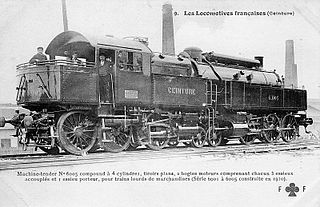
The du Bousquet locomotive was an unusual design of articulated steam locomotive invented by French locomotive designer Gaston du Bousquet. The design was a tank locomotive, carrying all its fuel and water on board the locomotive proper, and a compound locomotive. The boiler and superstructure were supported upon two swivelling trucks, in a manner similar to a Meyer locomotive.
Gaston du Bousquet (1839–1910) was a French engineer who was Chief of Motive Power of the Chemin de Fer du Nord, designer of locomotives and professor at École centrale de Lille.
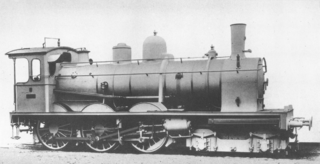
The locomotives of Baden Class IV e were designed and built for the Grand Duchy of Baden State Railway in the late 19th century by the Elsässischen Maschinenbau-Gesellschaft Grafenstaden, who supplied the first eight examples in 1894. They were the first locomotives in Germany with a 4-6-0 wheel arrangement. Another 75 locomotives were built up to 1901 by the Maschinenbau-Gesellschaft Karlsruhe.

État 3701 to 3755 were a series of 4-6-0 de Glenn compound steam locomotives of the Chemins de fer de l'État built between 1901 and 1909.
Nord 5.1201 to 5.1230 were a class of 2-10-0 “Decapod” steam locomotives of the Chemins de Fer du Nord, designed to handle heavy coal trains. On 1 January 1938, they all passed to the SNCF, who numbered them 2-150.B.1 to 30.

Est 141.701 to 141.742 were a class of 42 suburban Mikado (2-8-2T) tank locomotives of the Compagnie des chemins de fer de l'Est. The Est placed then in power class (série) 12s. At nationalisation in 1938, they passed to the SNCF who renumbered them 1-141.TC.701 to 1-141.TC.742.
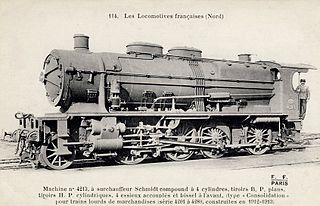
Nord 4.061 to 4.340 were a class of 2-8-0 tender goods locomotives of the Chemins de fer du Nord. At nationalisation on 1 January 1938 they all passed to the SNCF who renumbered them 2-140.A.1 to 2-140.A.280.

SNCF 232.P.1 was an experimental prototype high-pressure steam locomotive ordered by the Chemins de fer du Nord, but delivered to the Société nationale des chemins de fer français (SNCF) in 1939. It was the first and only member of SNCF's first class of 4-6-4 or Hudson type of locomotives.

SNCF 150.P were a class of 2-10-0 “Decapod” steam locomotives built as standard locomotives of the newly created Société Nationale des Chemins de fer Français (SNCF) between April 1940 and April 1950

Nord 3.1101 and 3.1102 were a class of two express passenger 4-6-4 (Baltic) tender locomotives designed by Gaston du Bousquet for the Chemins de Fer du Nord, and built in the company's La Chapelle Workshops.
Ceinture 5001 to 5012 were a class of 2-10-2T tank locomotives of the Syndicat d'Exploitation des Chemins de fer de Ceinture de Paris. They were used for hauling freight trains on the Grande Ceinture line in Paris, and later the Région Nord.

Ceinture 4001 to 4005, was a class of five 4-8-0T tank locomotives designed by the Chemins de fer de l'Ouest for the Syndicat d'Exploitation des Chemins de fer de Ceinture de Paris.

Ceinture 51 to 65 were a class of fifteen 4-6-0T locomotives built in 1902 for the Syndicat d'Exploitation des Chemins de fer de Ceinture de Paris. They passed to the Chemins de fer du Nord in 1934 who renumbered them Nord 3.701 to 3.715. In 1938 they passed to the SNCF who renumbered them 230.TA.1 to 230.TA.6.

Ceinture 21 to 35 were a class of fifteen French 0-6-0T locomotives of the Syndicat d'Exploitation des Chemins de fer de Ceinture de Paris. built in 1899 for pulling suburban passenger trains.
Est 4003 to 4175 was a class of 173 French compound 2-8-0 locomotives built in the early years of the 20th century for the Chemins de fer de l'Est. They were built to handle the increasing output of the steel industry in the Lorraine area.
Nord 360 to 399, renumbered to Nord 4.361 to 4.400 in 1872, were 0-8-4T Engerth locomotives for freight traffic of the Chemins de Fer du Nord. The machines were built in 1856–1857 and retired from service in 1907–1910.
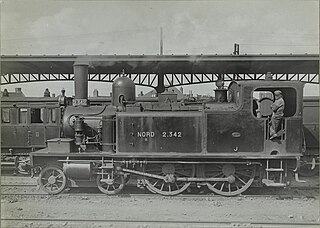
Nord 2.311 to 2.380, were 4-4-0T locomotives for suburban passenger traffic of the Chemins de Fer du Nord. The machines were built in 1892–1893. They were nicknamed "Ravachol" because of the entry into service of the series when the latter was arrested in April 1892.
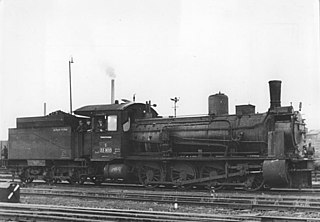
The Prussian G 7.2 was a class of 0-8-0 tender compound locomotives of the Prussian state railways. In the 1925 renumbering plan of Deutsche Reichsbahn, the former Prussian locomotives produced from 1895 to 1911 were given the class designation 55.7–13; while the locomotives of former Mecklenburgische Friedrich-Franz-Eisenbahn (MFFE) locomotives were classified as 55.57.















